Every home has one. That drawer, often in the kitchen or entryway, swallows everything from stray batteries and rubber bands to orphaned keys and instruction manuals. You know the one. It becomes a catch-all, a symbol of everyday chaos, and a source of frustration when you desperately need that one small item. You search through its contents, and time disappears. But what if you could transform this notorious space into an organized, efficient asset in your home? You absolutely can. This guide delivers practical, actionable strategies for junk drawer organization that actually lasts, turning frustration into functionality. Consider this your quick win for greater home comfort.

The Universal Junk Drawer Dilemma: Why It Happens
You face a constant barrage of small items that lack a definitive home. This is the primary reason the junk drawer exists. A pen runs out of ink, and you toss it in. A small screw drops, and it lands there. A takeout menu arrives, and into the drawer it goes. Life moves fast, and often, you prioritize speed over dedicated placement. This drawer acts as a convenient, albeit temporary, holding zone for these transient objects.
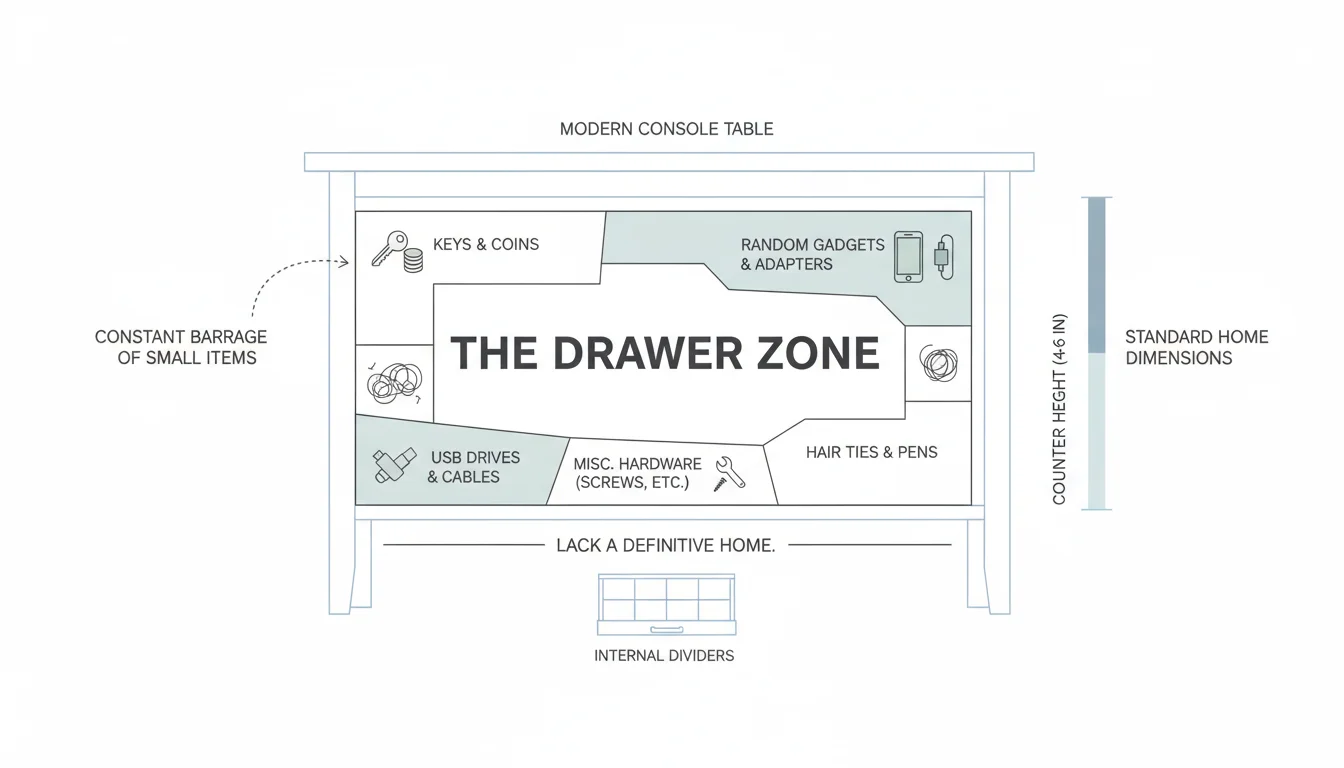
Many busy homeowners, renters, and apartment dwellers find themselves in this predicament. You need a place for everything that doesn’t immediately fit into a larger organizational system. This drawer serves as an emergency landing strip for miscellaneous necessities. However, without a structured approach, this temporary storage quickly becomes permanent clutter. It accumulates everything from expired coupons to spare buttons from clothes you no longer own. The drawer becomes a graveyard of good intentions, undermining the efficiency you seek in your kitchen organization or general home management.
The problem deepens as you add more items. The visual chaos inside the drawer reflects a mental burden. You waste time digging through irrelevant items to find what you need. This small pocket of disarray impacts your daily routine, adding subtle stress to otherwise simple tasks. Recognizing why this happens is the first step toward reclaiming this valuable storage space and transforming it into a functional asset for your home.
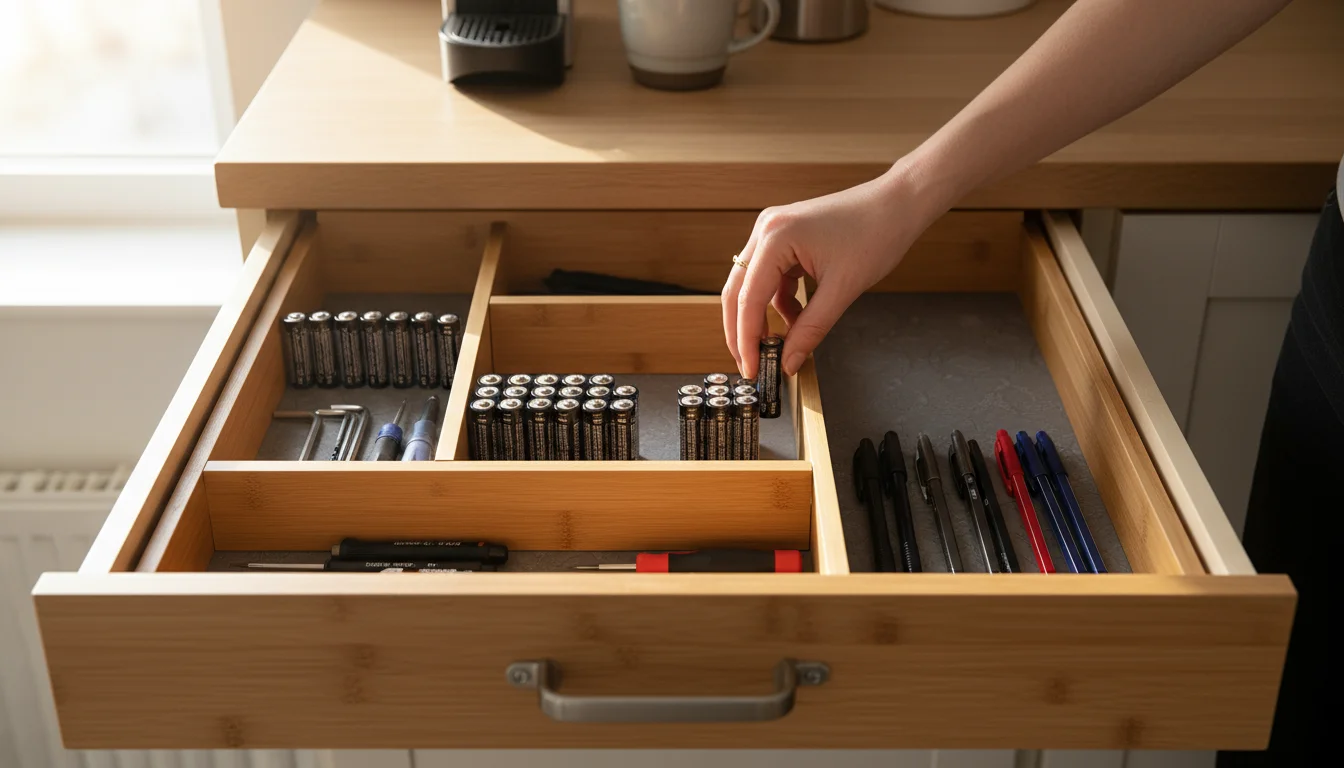
The “Quick Win” Approach to Lasting Organization
Conquering your junk drawer offers an ideal “quick win” in home organization. This strategy focuses on achieving a noticeable, positive change in a relatively short amount of time. You invest minimal effort for maximum impact, which motivates you for larger organizing projects. For busy individuals, this approach is invaluable. You do not need to dedicate an entire weekend. Instead, you can complete this project in an hour or two, leaving you with an immediate sense of accomplishment.
A quick win project provides tangible results quickly. An organized junk drawer demonstrates that effective systems are achievable and sustainable, even with limited time and budget. You experience the benefits firsthand: easily locating batteries, finding a working pen, or grabbing a tape measure without a frantic search. This positive reinforcement encourages you to maintain the system and potentially tackle other small areas of your home. It’s about building momentum and proving to yourself that realistic, lasting organization is not just possible, but also highly rewarding.
This strategy emphasizes actionable steps that yield immediate benefits, fostering a sense of control over your home environment. You gain a powerful boost in confidence and efficiency, making your daily life smoother. Start with this manageable project, and watch how its success inspires further improvements in your home comfort and functionality.
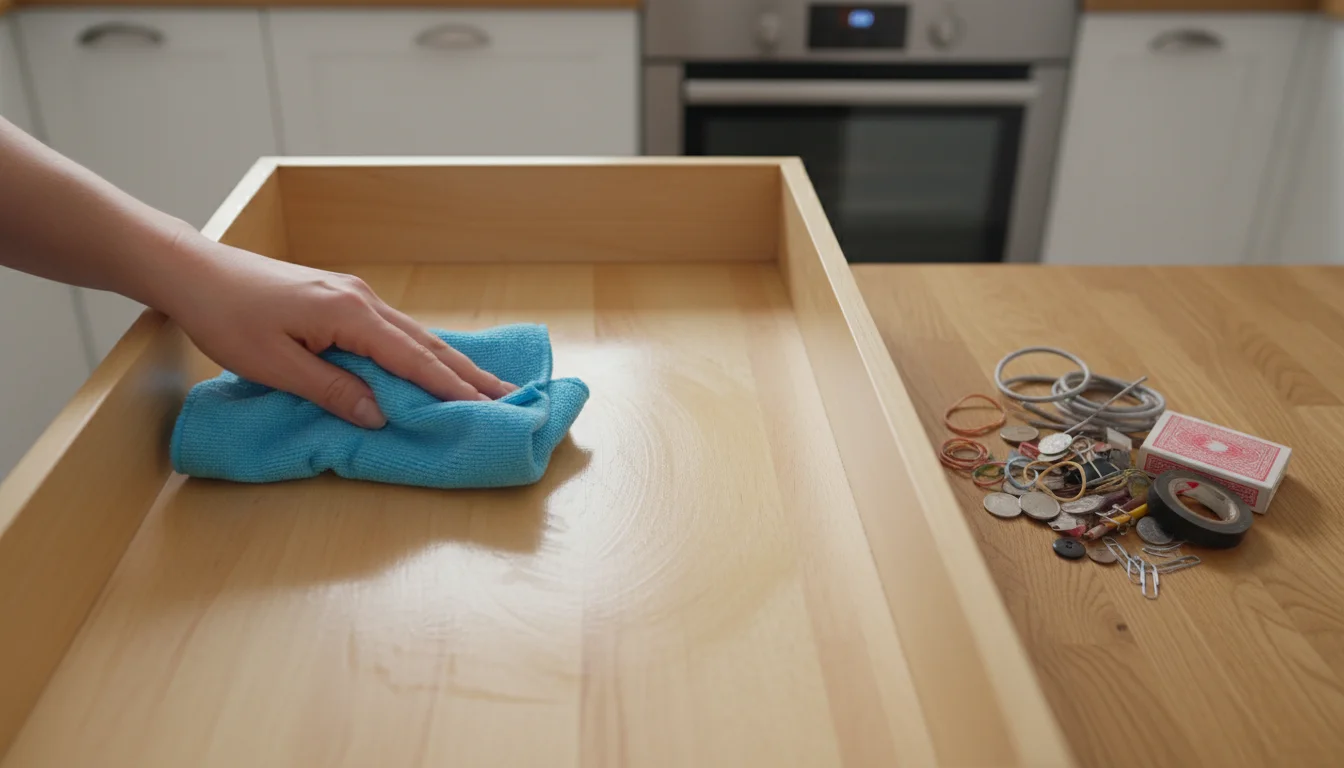
Phase 1: The Great Empty-Out and Ruthless Decluttering
You cannot organize what you cannot see. The first, most crucial step in junk drawer organization is emptying every single item. Resist the urge to sort as you go. Simply remove everything from the drawer, placing the contents on a clean surface, like your kitchen counter or a small table. This provides a clean slate and allows you to properly assess the sheer volume and variety of items you possess.
Once empty, take a moment to clean the drawer thoroughly. Wipe away any dust, crumbs, or sticky residue that has accumulated. A clean foundation creates a fresh start for your new system. Use a multi-surface cleaner and a cloth, ensuring the drawer is dry before you return anything.
Now, prepare your sorting stations. Grab three boxes or bags and label them clearly: “Keep,” “Relocate,” and “Discard.” The “Discard” pile includes items for trash, recycling, or donation. The “Relocate” pile holds items that belong elsewhere in your home, such as a tape measure that belongs in your toolbox or mail that needs attention at your desk. The “Keep” pile contains items that genuinely belong in a convenient, accessible drawer.
As you go through each item, ask yourself these critical questions:
- Do I use this? If you have not used it in the past six months, question its necessity.
- Does this item work? Test pens, flashlights, or anything battery-operated. Discard broken items.
- Does this item have a clear home elsewhere? If so, put it in the “Relocate” pile immediately.
- Do I need multiple copies of this? Keep only one or two working pens, for example.
Be ruthless in this phase. You aim for efficiency, not just rearrangement. Many items you find are pure trash: dried-up pens, dead batteries, expired coupons, or single-use items you no longer need. This initial purge dramatically reduces the volume, making the next steps much simpler.
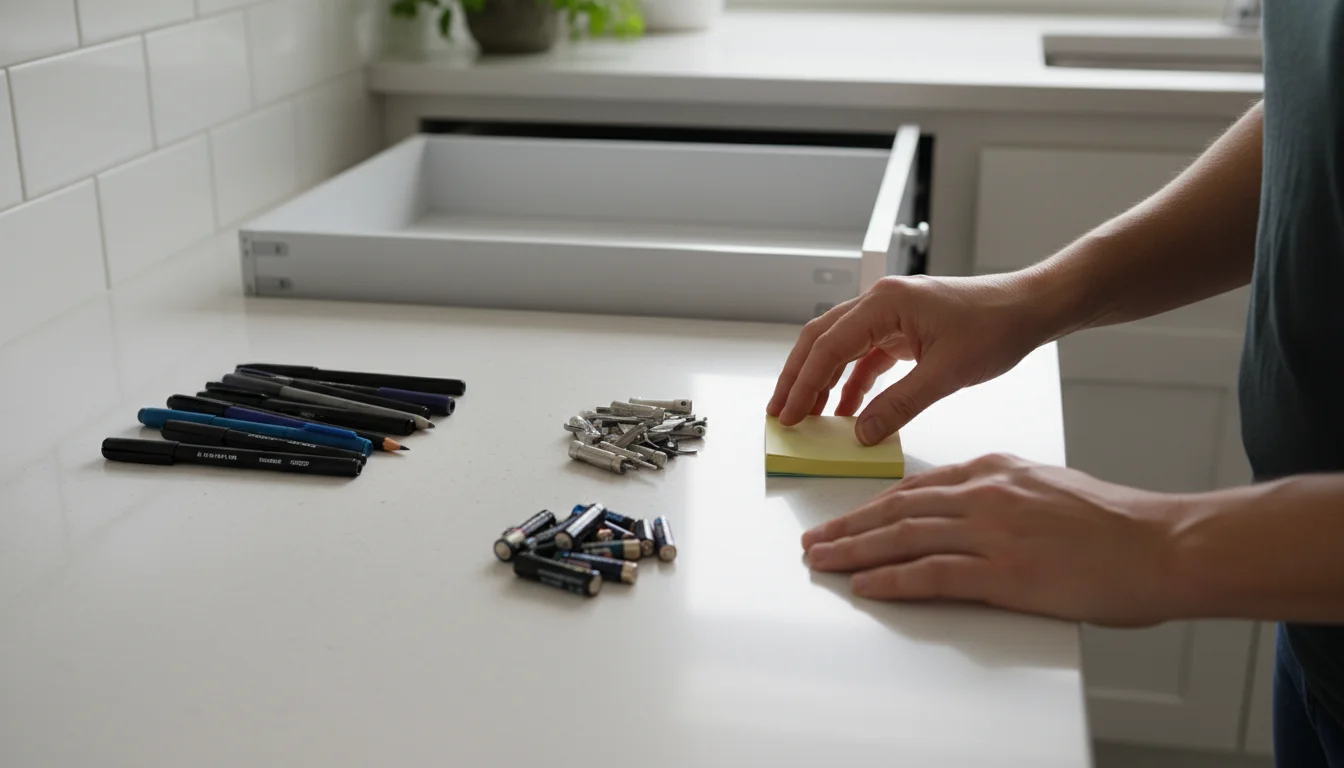
Phase 2: Sort, Categorize, and Assign a Home
After your decluttering efforts, you have a much smaller, more manageable pile of “Keep” items. Now, you organize these remaining essentials. The key to lasting `junk drawer organization` involves categorizing items and assigning them logical homes within the drawer. You create a system that reflects how you use these items daily.
Begin by grouping similar items together. You will likely find categories emerging naturally:
- Writing Utensils: Pens, pencils, markers.
- Small Tools: Screwdrivers, Allen wrenches, tape measure, utility knife.
- Adhesives: Tape, glue sticks, super glue.
- Batteries: Various sizes, ensuring they are separated to prevent short circuits.
- Office Supplies: Paper clips, rubber bands, thumbtacks.
- Tech Accessories: Small charging cables, earbuds, USB drives.
- Miscellaneous Everyday: Lighters, small scissors, nail clippers, safety pins.
Consider the primary function of your junk drawer. If it is in your kitchen, you might prioritize kitchen-specific items like bag clips, wine stoppers, or a small whisk. If it is in an entryway, keys, spare change, and sunglasses might take precedence. Tailor the categories to your household’s actual needs.
Once grouped, visualize how these categories will fit into your drawer. You are essentially creating “zones” within the drawer, designated areas for specific types of items. This concept makes finding and returning items intuitive. When everything has a designated spot, the drawer stays organized effortlessly.
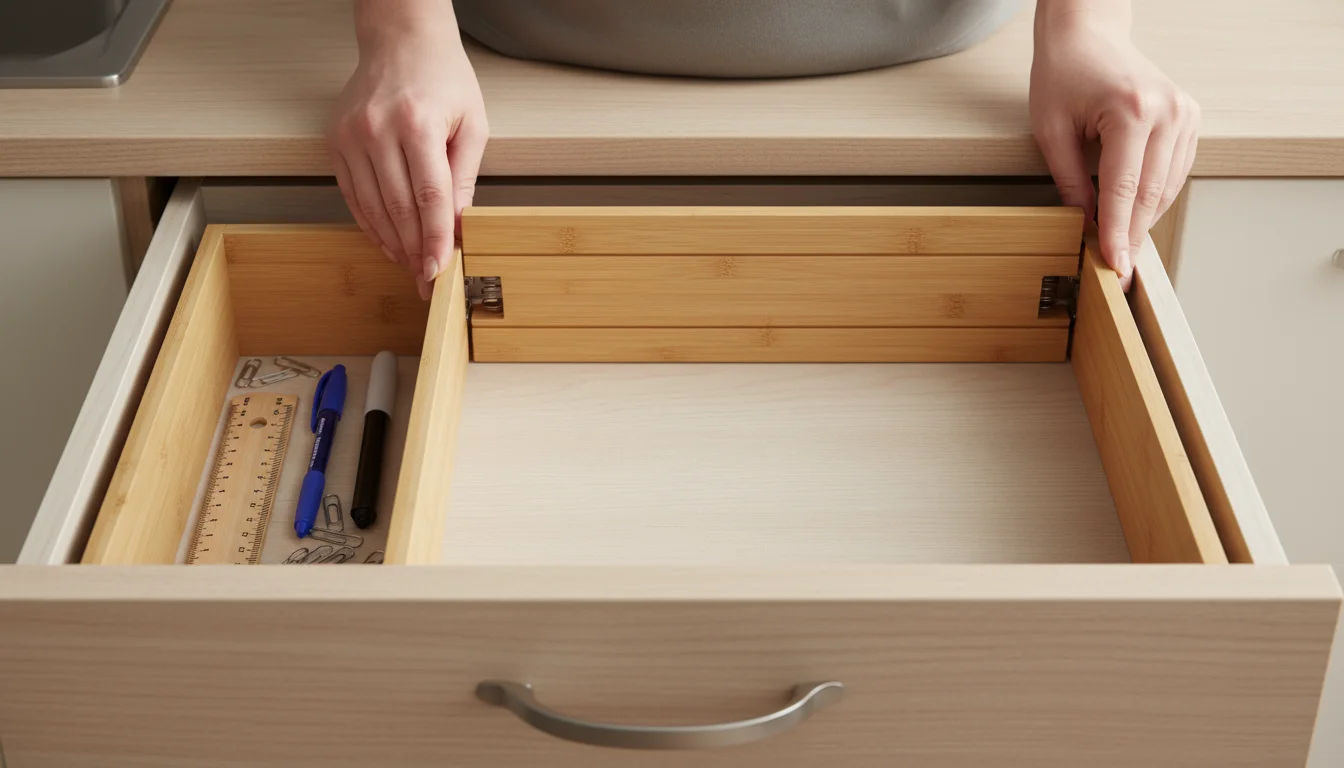
Phase 3: Smart Storage Solutions with Drawer Dividers
With your items sorted into categories, you are ready to implement the physical structure that will maintain order. This is where `drawer dividers` become your best friend. Dividers prevent items from shifting, mixing, and creating new chaos. They enforce the “zones” you established in the previous phase, giving every item a clear boundary.
You have several options for drawer dividers, catering to various budgets and drawer sizes:
- Adjustable/Expandable Dividers: These versatile options extend to fit your drawer’s width or length, creating custom compartments. They are excellent for quickly segmenting larger items or creating distinct zones. You can find these at most home goods stores.
- Modular Organizers: These come as individual bins or trays in various sizes, allowing you to arrange them like puzzle pieces within your drawer. You can mix and match to perfectly fit your categorized items. Brands like The Container Store offer extensive modular systems, but you can also find budget-friendly versions at discount retailers or IKEA.
- Built-in Organizers: Some drawers come with integrated dividers, particularly in newer kitchens. If you have this, you are ahead of the game.
- DIY Solutions: You do not need to spend a lot of money. Small cardboard boxes (from packaging or cereal boxes), repurposed plastic containers (like yogurt cups or butter tubs), or even cut-to-size pieces of rigid foam core can serve as effective dividers. Just ensure they are sturdy enough to hold your items and fit snugly within the drawer.
Measure your drawer’s interior dimensions (length, width, and depth) before purchasing any organizers. This ensures a proper fit and maximizes your storage space. Look for dividers with a non-slip bottom to prevent them from sliding around when you open and close the drawer. For small items like paper clips or thumbtacks, mini containers or silicone trays keep them contained within their designated zone.
Investing in quality `drawer dividers` means you only do this organization project once. These tools act as a silent enforcer, ensuring your pens stay with pens and your batteries remain separate. This physical structure is essential for transforming a chaotic catch-all into a reliable, functional storage space for all your everyday essentials.

Maintaining Order: Your Organized Junk Drawer System
You have achieved a beautifully organized junk drawer. Now, the goal is to keep it that way. Maintenance is simpler than the initial overhaul, especially with the clear system you have established. Consistent habits prevent the drawer from reverting to its old chaotic state.
Implement the “one-in, one-out” rule for items that frequently accumulate. If you add a new pack of batteries, ensure you dispose of any old or dead ones. If you bring in a new pen, remove an old, non-functional one. This prevents overfilling and ensures only useful items reside in the drawer.
Conduct quick, regular checks. Once a week, perhaps when you clean your kitchen, take 60 seconds to glance inside the drawer. Does everything have a home? Are there any rogue items? This brief check allows you to spot potential issues before they escalate. It takes far less time to correct one or two misplaced items than to re-organize an entire drawer.
Establish a clear policy for “miscellaneous” items. Instead of letting them accumulate, have a designated “relocate” bin nearby, perhaps in another drawer or on a counter. Any item that genuinely does not belong in the junk drawer, or any item from the junk drawer that needs to be taken to another room (like a measuring tape that belongs in the garage), goes into this bin. Periodically, you empty the relocate bin, returning items to their rightful homes throughout the house. This prevents the junk drawer from becoming the catch-all for every transient object in your home.
Communicate the new system with everyone in your household. Show them where items belong and explain the benefits of keeping the drawer organized. When everyone understands and participates, maintaining order becomes a shared responsibility and a lasting success. An organized `kitchen organization` system, even for a junk drawer, thrives on clear communication and consistent habits.
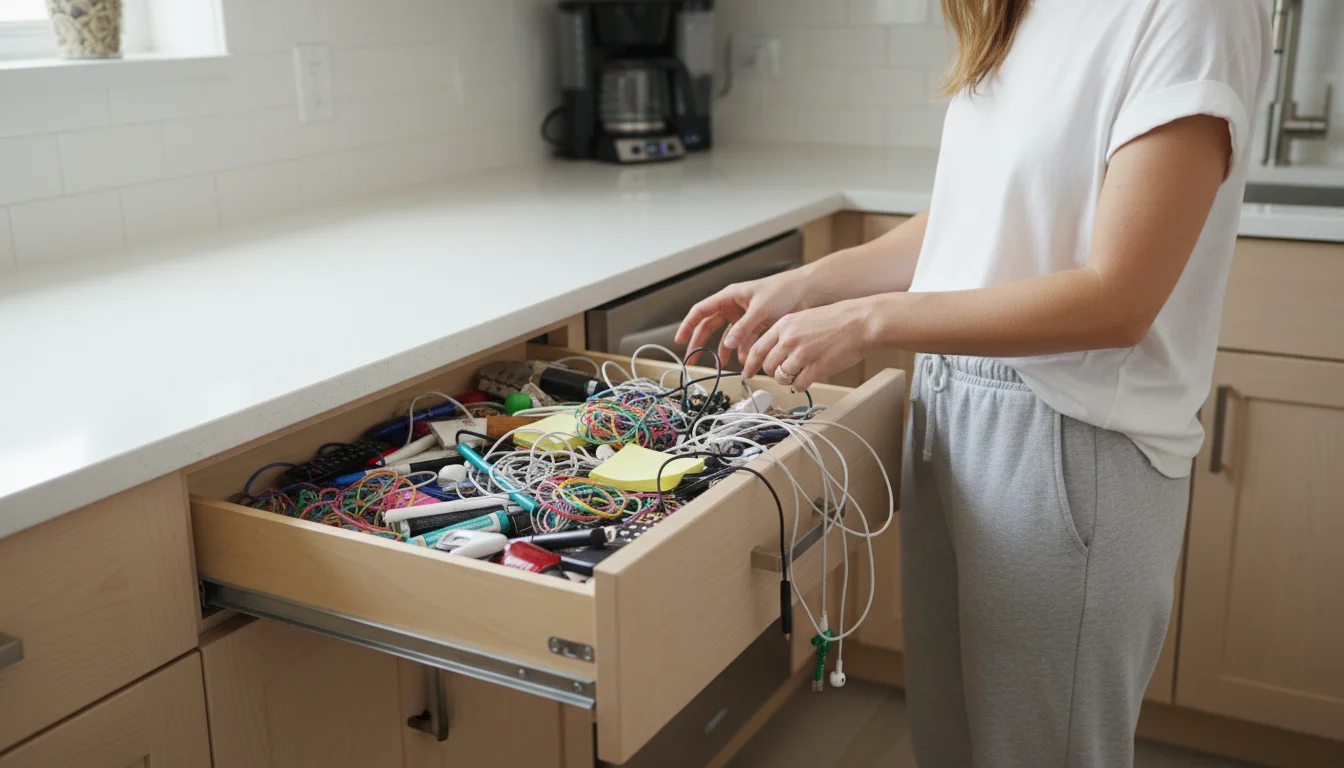
Common Junk Drawer Blunders and Solutions
Even with good intentions, you can encounter pitfalls that lead to a disorganized junk drawer. Recognizing these common blunders empowers you to avoid them and maintain your newly organized space.
Blunder 1: Over-stuffing the Drawer.
Problem: You have too many items for the allocated space, leading to a crowded drawer where things get lost or pushed out of place. This often stems from an incomplete decluttering phase.
Solution: Revisit Phase 1. Be more aggressive in your decluttering. Ask yourself if you truly need three sets of scissors or five different lighters. Store bulkier, less-used items elsewhere if they do not fit comfortably. Remember, the goal is easy access, not cramming.
Blunder 2: No Dedicated Homes for Items.
Problem: You have items in the drawer without a clear, specific spot. When you or a family member puts something away, they simply drop it wherever there’s space.
Solution: Implement your `drawer dividers` and clearly define zones. Labeling the dividers, even mentally, helps reinforce the system. Every item should have a home. If you find an item consistently lacks a home, reconsider if it genuinely belongs in this drawer.
Blunder 3: Treating the Drawer as a Permanent “Temporary” Zone.
Problem: You use the drawer as a long-term holding area for items that belong in other rooms or require immediate action (like mail or receipts).
Solution: Stick to the “Relocate” rule. Create a physical “out-box” or a designated spot near the drawer for items that need to go elsewhere. Make it a habit to empty this out-box daily or every other day. The junk drawer serves for truly miscellaneous, everyday household items, not pending tasks.
Blunder 4: Ignoring Maintenance.
Problem: You organize the drawer perfectly, but then never touch it again until it is overflowing.
Solution: Schedule those quick, regular check-ins. A minute once a week prevents hours of future reorganization. Encourage all household members to “reset” the drawer by quickly putting items back in their designated spots when they are done using them. This collective effort significantly reduces maintenance burden.
By proactively addressing these common mistakes, you strengthen your `junk drawer organization` system and ensure it remains a helpful, functional part of your home for the long term. A little vigilance goes a long way in sustaining order.
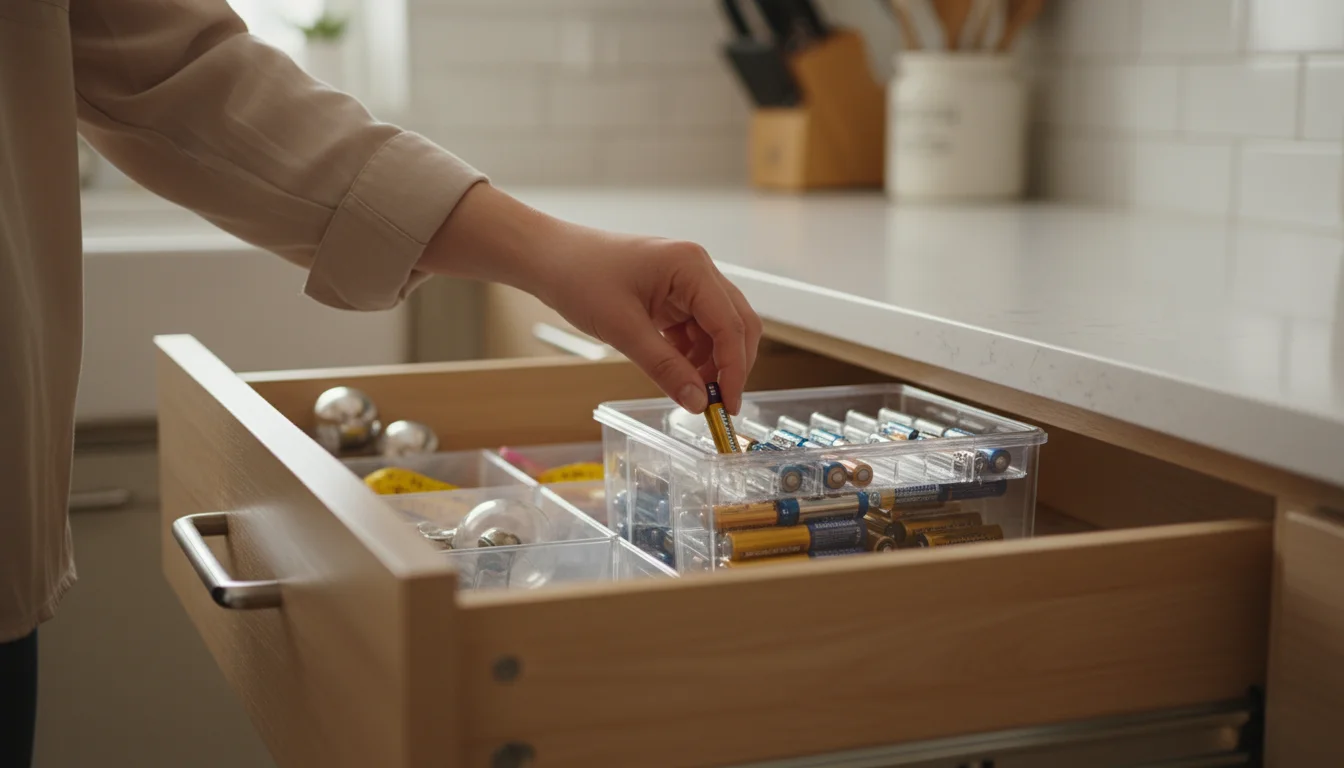
Frequently Asked Questions
How often should I organize my junk drawer?
After the initial thorough organization, aim for a quick tidy-up every week or two. A full re-organization typically becomes necessary only once or twice a year, or when you notice the system breaking down. Regular maintenance prevents major overhauls.
Can I use a junk drawer for important papers?
You should avoid using a junk drawer for important papers. Papers, especially documents you need to keep, require a dedicated filing system. The junk drawer’s purpose is for small, everyday miscellaneous items, not critical records that can easily get lost or damaged.
What if I have a limited budget for organizers?
Many effective `drawer dividers` are budget-friendly. Consider repurposing small boxes, plastic containers, or even cutting cardboard to create DIY compartments. Dollar stores, discount retailers, and even Apartment Therapy offer creative and inexpensive organizational solutions. The most important thing is creating boundaries for your items, regardless of the material.
What are the most common items found in a junk drawer?
Typical junk drawer items include pens and pencils, rubber bands, paper clips, batteries, small screwdrivers, flashlights, lighters, tape, scissors, keys, measuring tapes, and various charging cables. The specific contents often reflect the drawer’s location, such as more kitchen-related items if it is a kitchen drawer.
You have taken control of a universal clutter spot and transformed it into a practical, functional asset. This small change creates a ripple effect, reducing daily friction and adding to your home’s overall comfort. You deserve an organized home that supports your busy life. Enjoy the newfound efficiency and peace of mind.
For expert home organization guidance, visit
Bob Vila,
HGTV — Home and
Apartment Therapy.
Disclaimer: This article is for informational purposes only and is not a substitute for professional advice. Consult professional organizers or specialists for personalized recommendations.
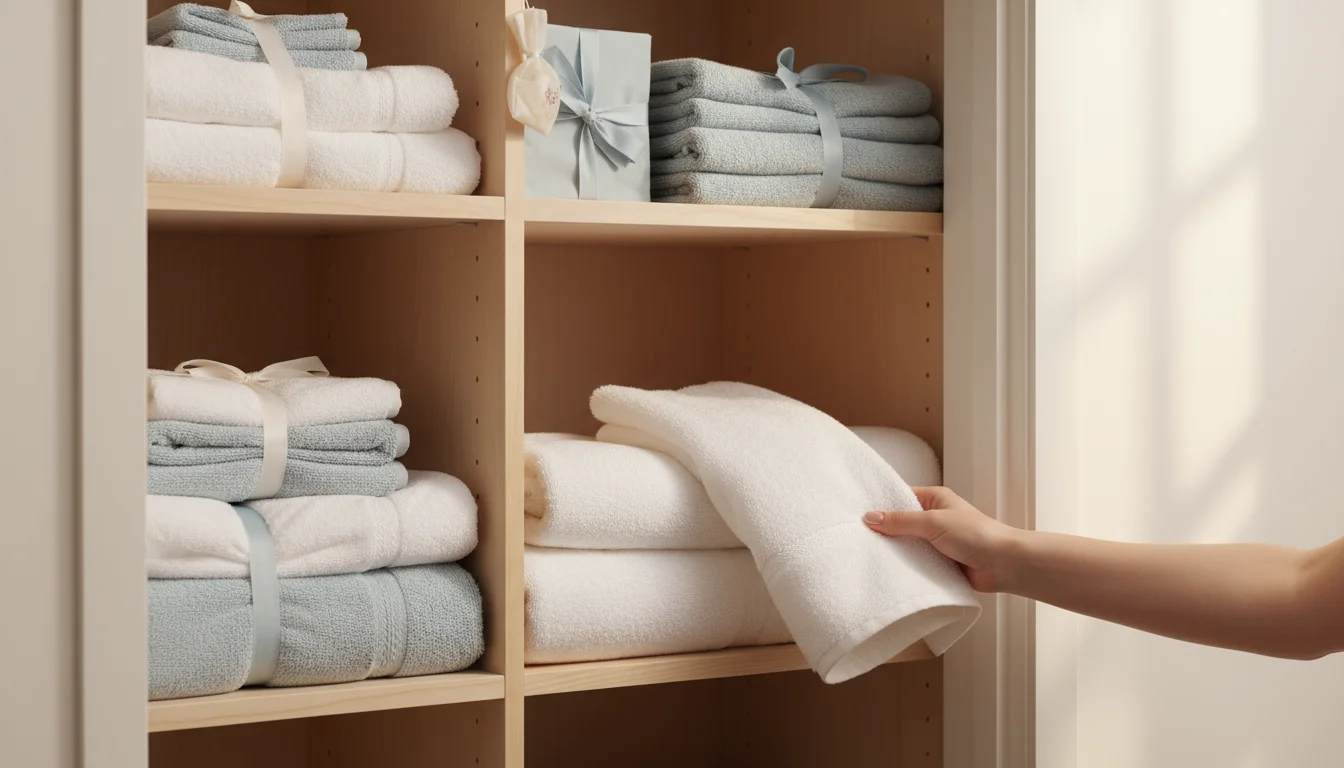
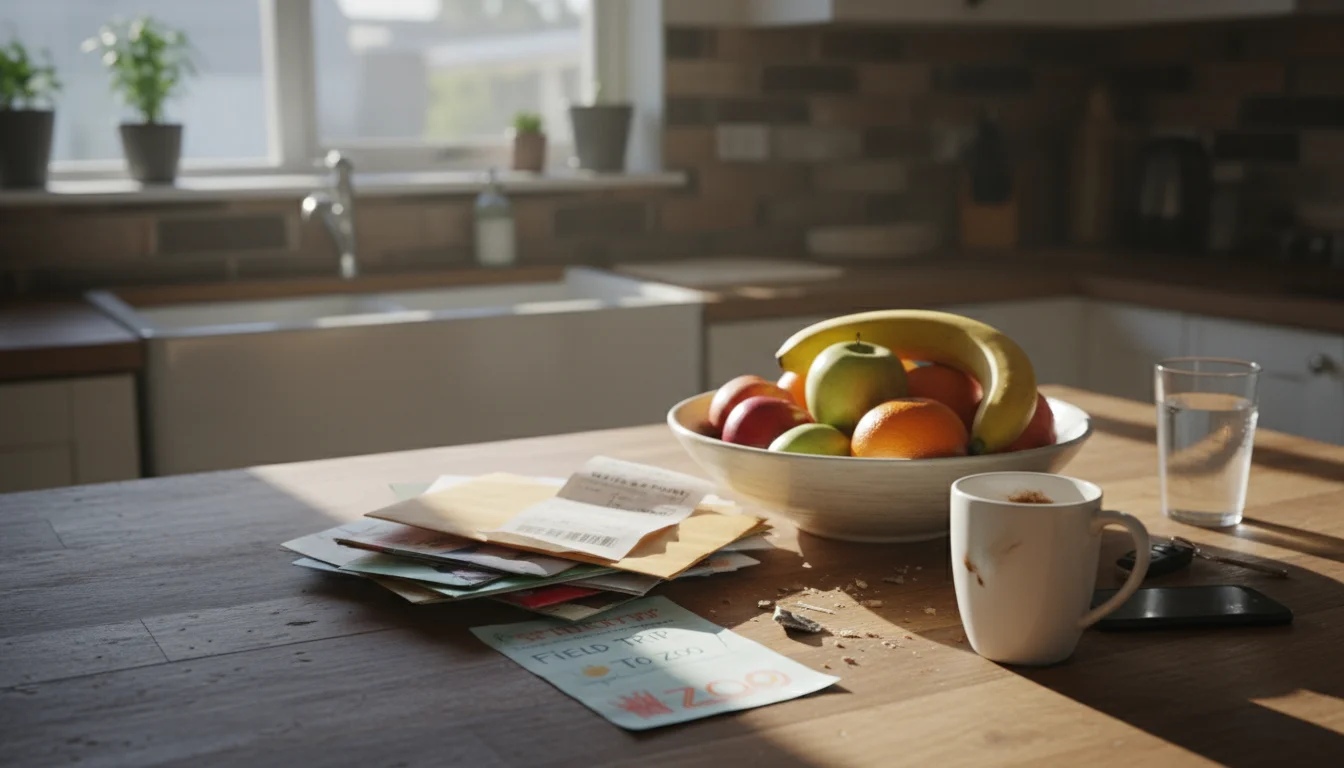
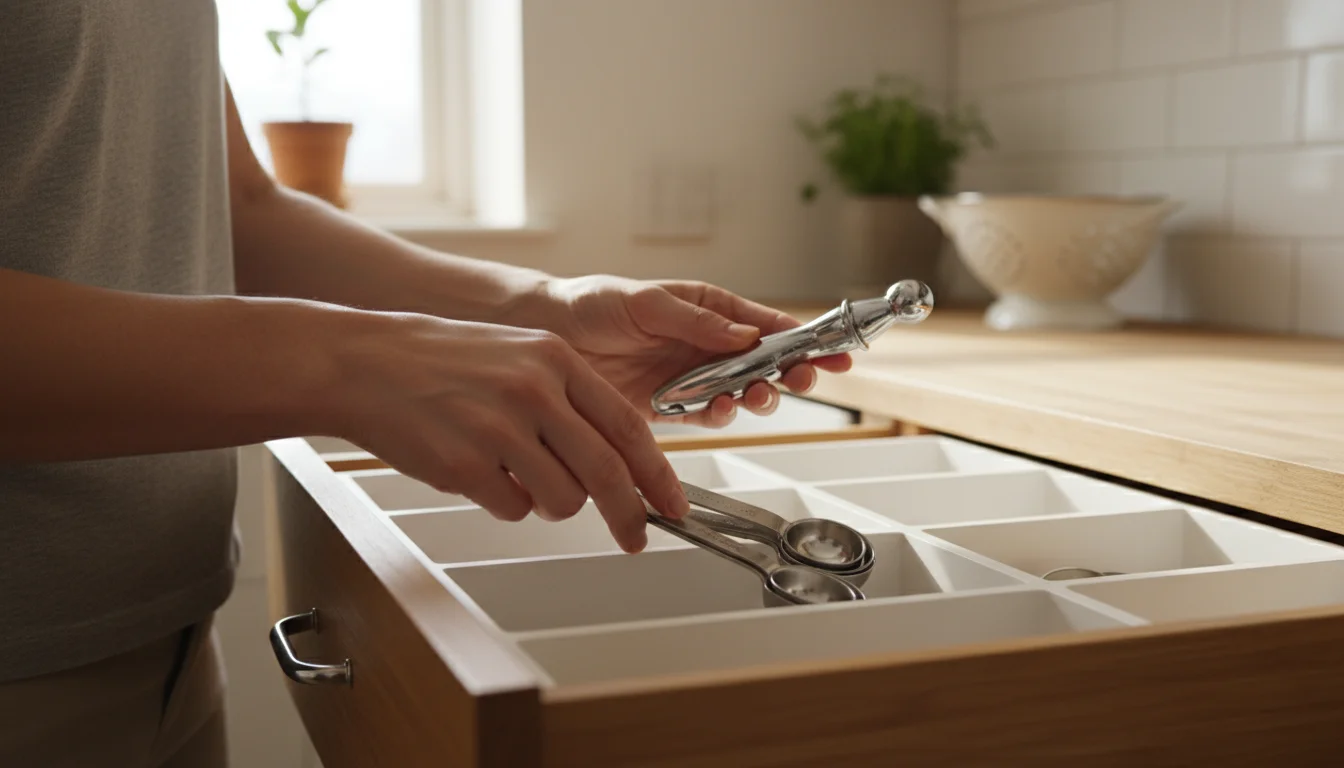
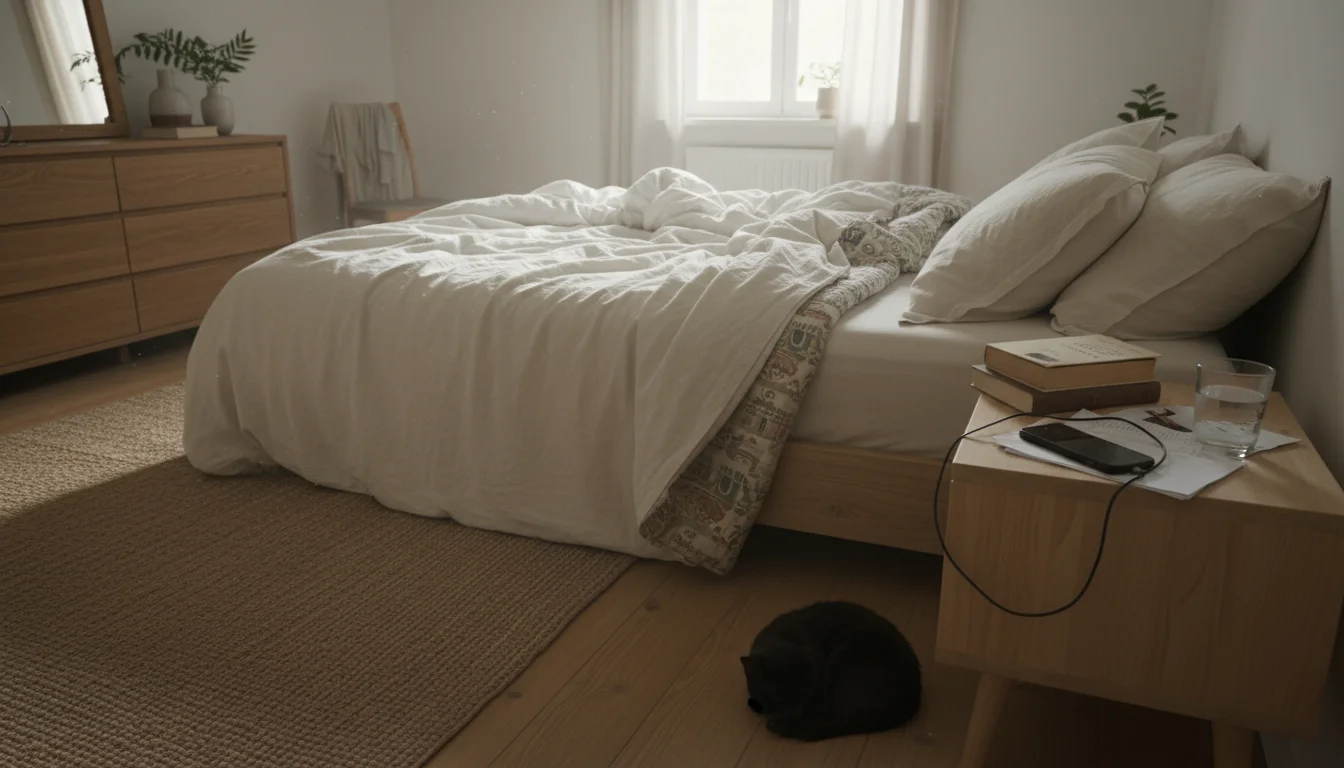
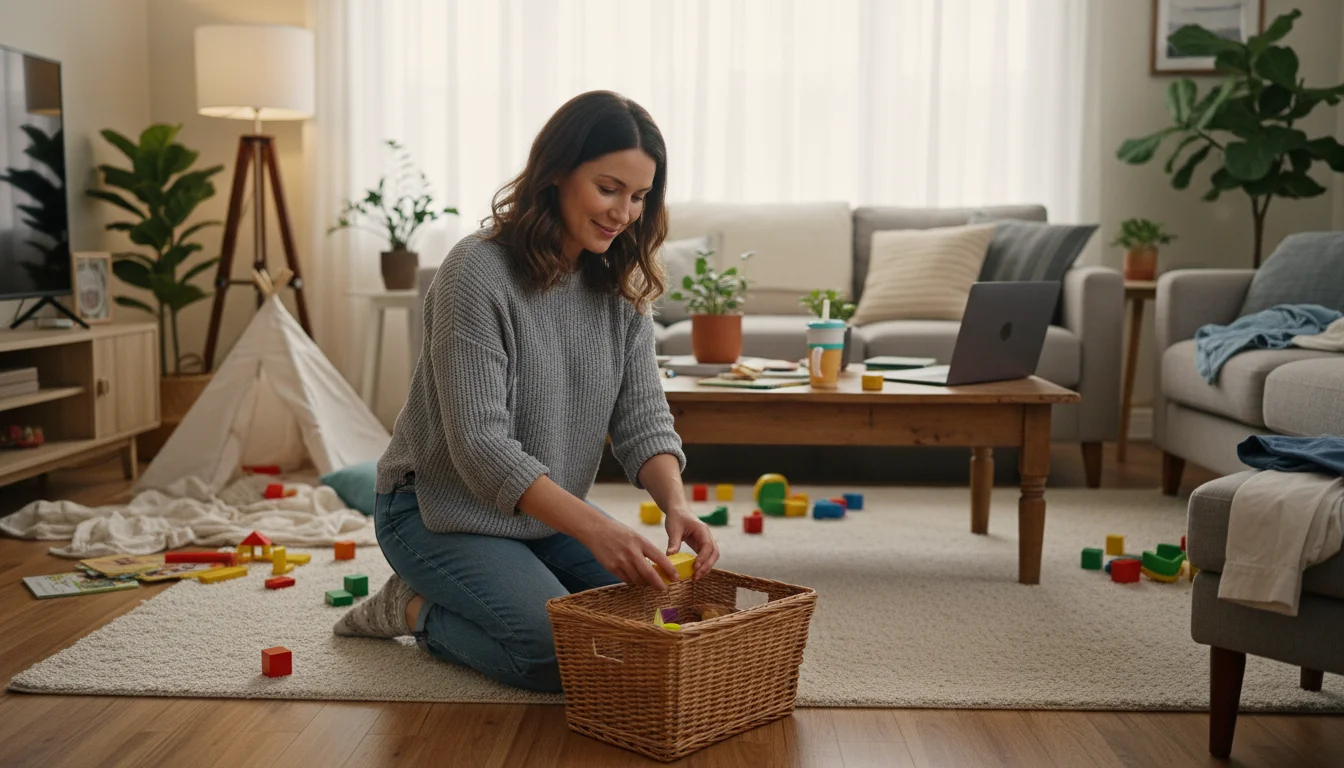
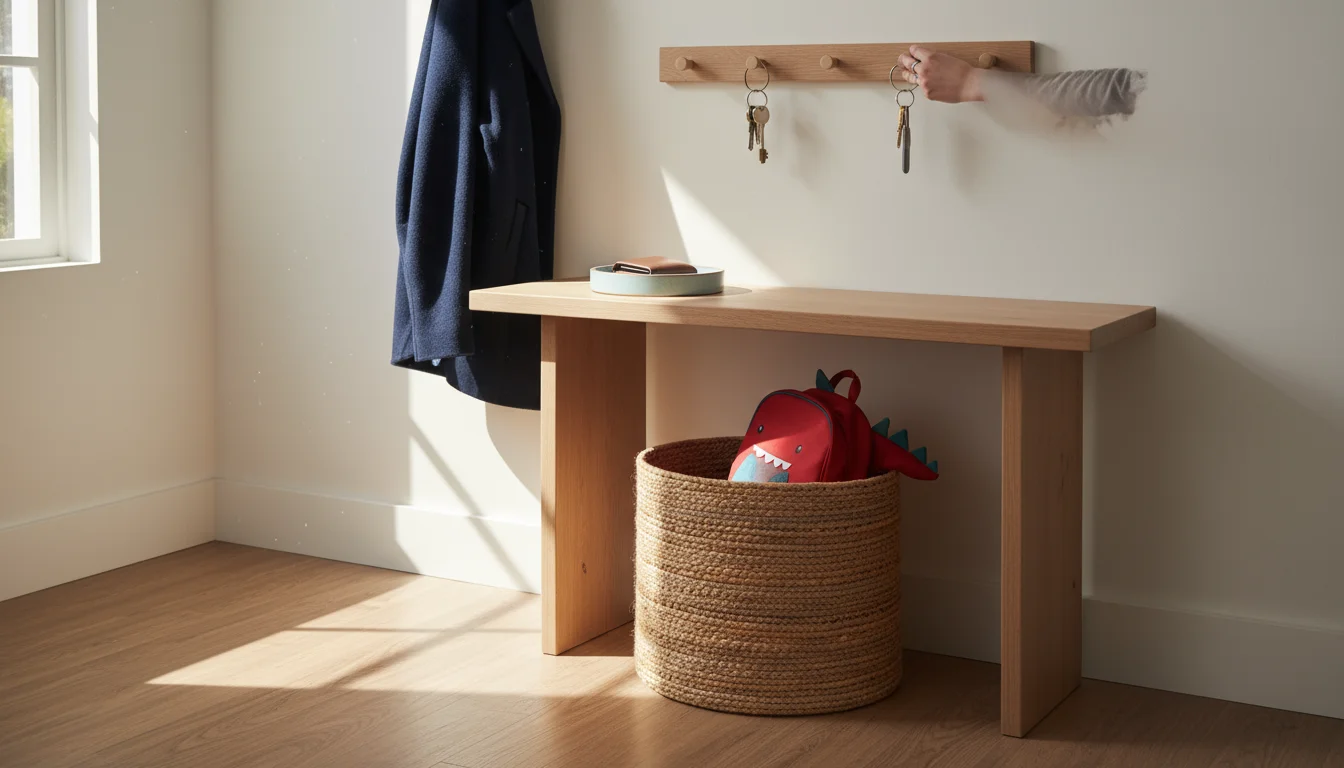

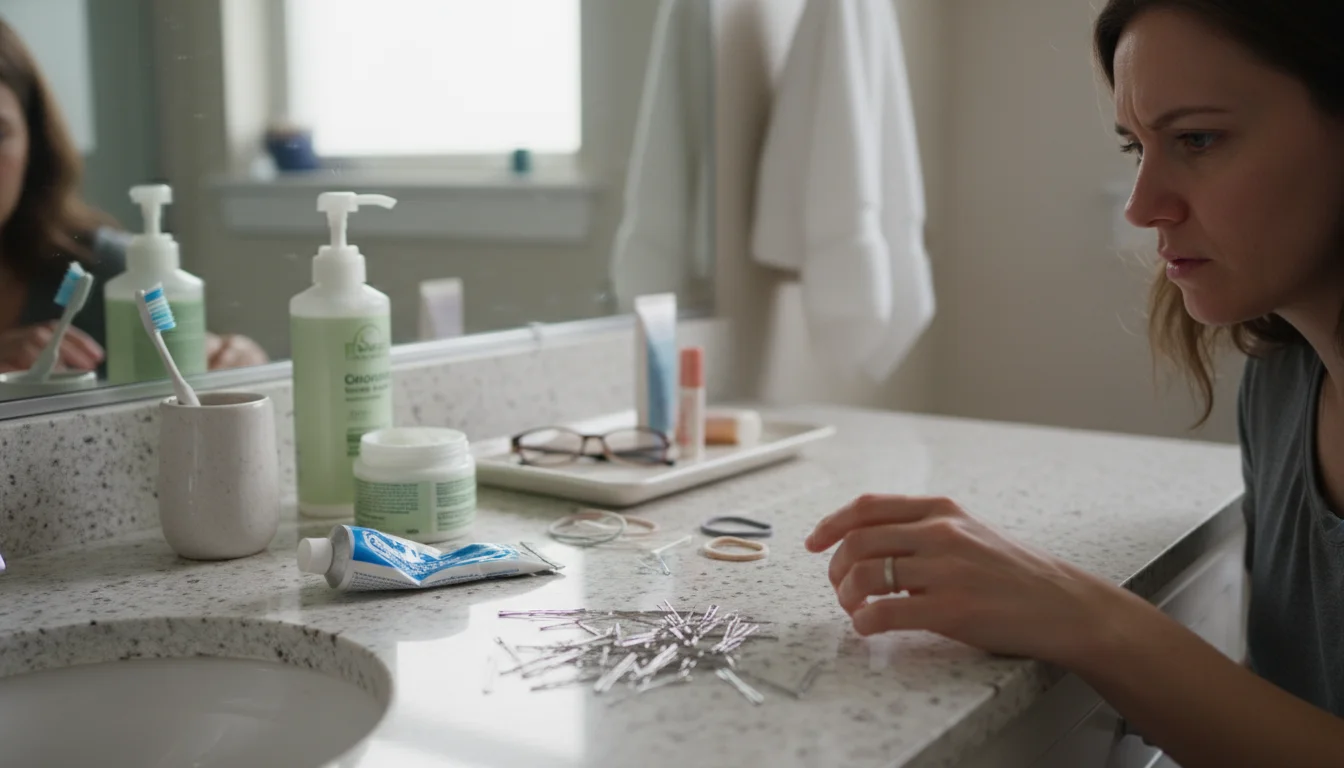
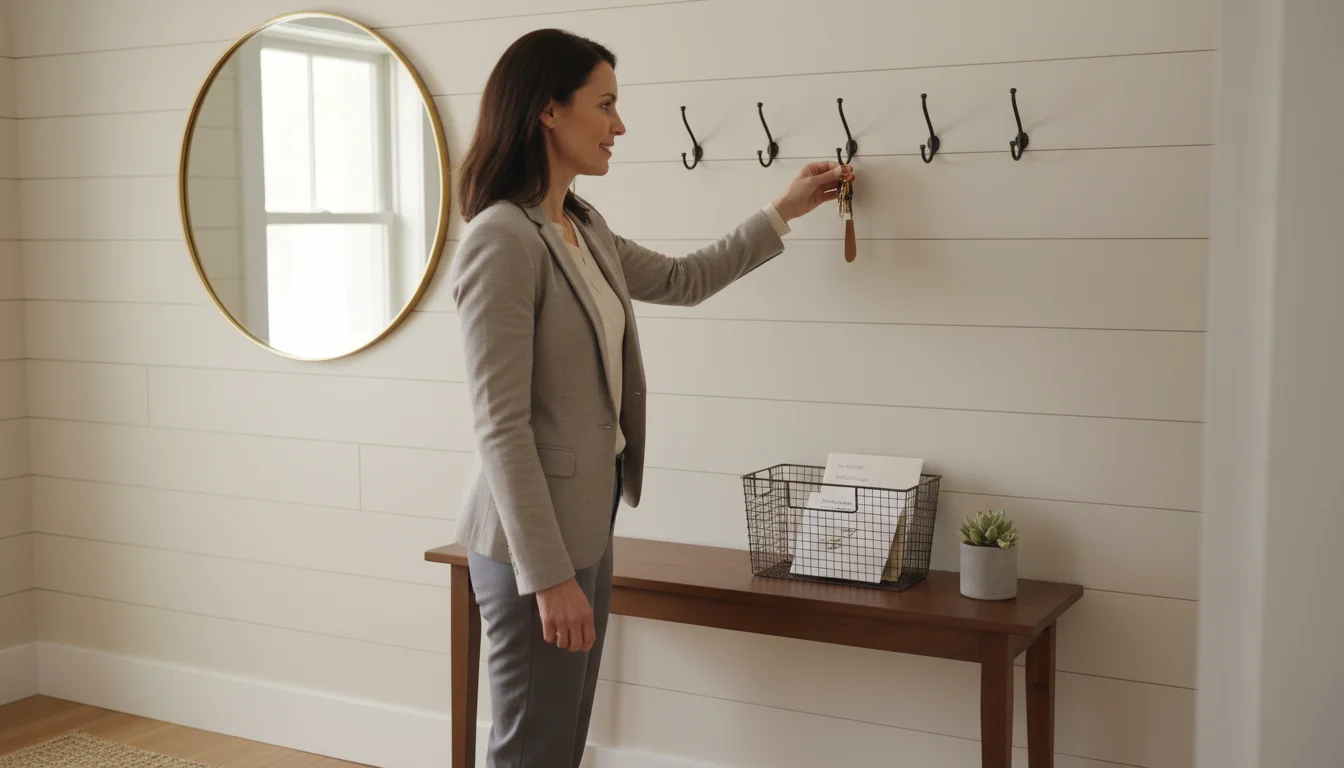
Leave a Reply